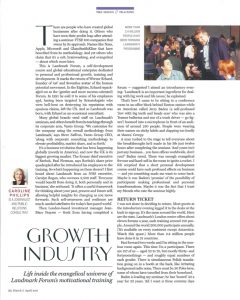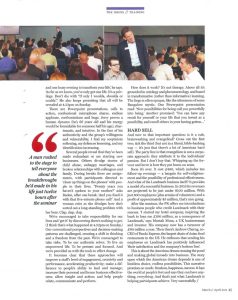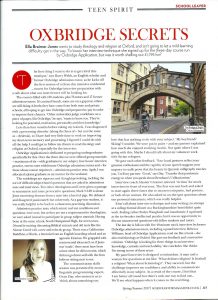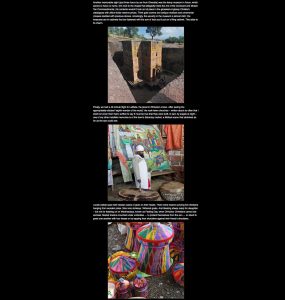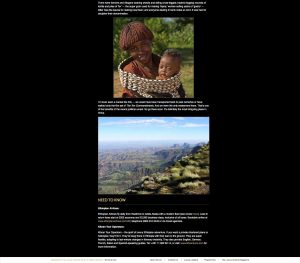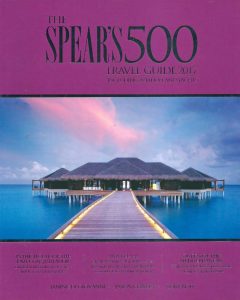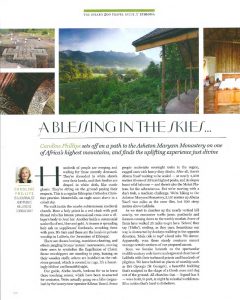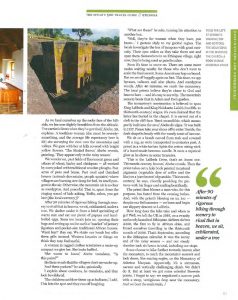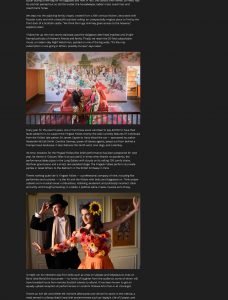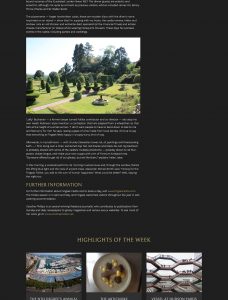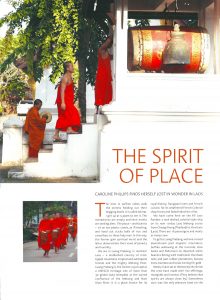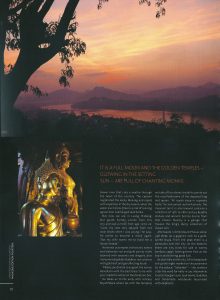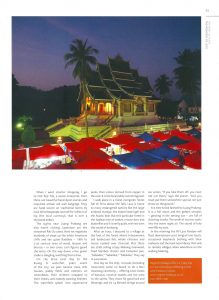Dar es Salaam, Tanzania, is one of those places dubbed a ‘hole’. It’s neither particularly old, nor particularly beautiful. But read on because now there’s a reason to visit: the Oyster Bay Hotel. Renovated in 2007, the hotel is particularly beautiful. It’s also one of the coolest overnight stops in Africa for in-transit honeymooners and those who are en-route, whether to the high snows of Kilimanjaro, the coral sands and historical sights of Zanzibar, the Rift Valley or the Serengeti with its annual migration of two million animals.
Dar es Salaam, Tanzania, is one of those places dubbed a ‘hole’. It’s neither particularly old, nor particularly beautiful. But read on because now there’s a reason to visit: the Oyster Bay Hotel. Renovated in 2007, the hotel is particularly beautiful. It’s also one of the coolest overnight stops in Africa for in-transit honeymooners and those who are en-route, whether to the high snows of Kilimanjaro, the coral sands and historical sights of Zanzibar, the Rift Valley or the Serengeti with its annual migration of two million animals.
The Oyster Bay Hotel is a nine-bed villa with shady colonnades and courtyards. It sits on Oyster Bay, next to the embassy residences and overlooking the ocean. Opposite, huge boats line the harbour (harbour duties are low here) and then set off in twos and threes to deter pirates. The hotel’s interior is in keeping with the new African aesthetic: tribal, organic and chic. It has a large, minimalist open-plan space with muted colours and materials that you want to touch (think jute, fur and hemp), plus artefacts that tell a story. There’s a Kudu-horn lamp musical instrument used in ceremonies to communicate with ancestors; interesting lights, such as raw rattan hanging shades and a Buri palm leaf floor lamp; tribal-chief-sized beds, village-sized bathrooms and free-standing baths. ‘Such a cool vibe,’ scribbled Harpers’ editor Lucy Yeomans in the Visitors’ Book.
I was there in transit to meet friends at Lake Tanganyika – the second deepest lake in the world and the world’s longest freshwater lake – where we were picking up a Lady Lori helicopter (East Africa’s numero uno heli company) to fly to the Serengeti. In the meantime it’s only the style-addicted like me who feel content to go to Africa and just revel in a hotel’s interior. So in pursuit of areas beyond my World of Interiors mindset I decided to spend my few spare hours on the island of Zanzibar.
The ferry trip to Zanzibar involved my travelling companion, Maretha Wemtzer, the (endlessly helpful and hospitable) white South African big mama of the Oyster Bay Hotel in lengthy cross-cultural negotiations. There were ten strangers who, offering their assistance, accompanied us from the taxi to the harbour-side ferry booking office. After a small tree’s worth of form-filling, animated chats about ‘Muzungus’ (white people), residents’ rates and charges for tourists and lots of gesticulating and hand-waving, finally a deal was struck: $80 for my return trip and substantially less for Maretha because she’s a resident. We were accompanied on the two and a half hour ride by cheerful Tanzanians and narcoleptic backpackers who slept on the ferry floor.
When you arrive in Zanzibar by sea, you pass the old dhow harbour where outrigger canoes chug up and down in turquoise waters bordered by golden sands. On the shore, there’s the old Arab fort and House of Wonders (a 19th-century ceremonial palace) of Stone Town, a World Heritage Site. The Aga Khan, spiritual leader of the Shia Ismaili Muslims, has poured development money into Zanzibar. The dollars show immediately on its manicured sea front garden – Forodhani Park – where, on the day we go, someone also happens to be wrapping the trees in red fabric, in readiness for a party. Better than a yellow ribbon round an old oak tree, any day.
We walked through Stone Town, Zanzibar’s old quarter. In Zanzibar, Portuguese rule was followed by that of Omani Arabs. Omani sultans made Zanzibar the seat of their Imamate, and their home. It then became a British protectorate in 1890. Little has changed since the 1850s; Stone Town is a maze of alleyways, mosques, bazaars and high-walled buildings with teak door frames and the Koran’s scripts and symbols: from the lotus (denoting reproductive power) to fish (for fertility). A roadside vendor was selling cane sugar juice and barbecued cassava (like sweet potato.) Around him, a few men sported the traditional kanzu (ankle-length robes) and some women wore bui-bui (black gowns). But the hot fashion item is still the men’s crocheted hat.
We visited artefact shops selling Coca-Cola cans fashioned into toy cars, beaded necklaces and bags and dresses made by women’s communities from kikoi fabric. Zanzibar Gallery, a wondrous book shop sells endless tomes on African art alongside photographs, carvings and textiles. At the fish market there are piles of unidentifiable blue fish, flailing yellow Piscean prototypes and octopuses; the vegetable and spice market has spiky ‘ugly fruit,’ cashews, pungent cloves and cumin – all taken away after purchase in bags made of old newspapers. At lunch we sat in a restaurant overlooking the ocean and ate the delightfully named pilli pilli perch, steamed with lime, chilli and garlic.
Then we took in a little history. The slave trade had existed for centuries before the sultans came to Zanzibar, but not on such a scale. In the mid 19th-century, 30,000 slaves a year were bought to Zanzibar. Some were punished by being buried alive in the walls of houses under construction; others were beaten and fondled lasciviously in the market. We visited the dank and cramped subterranean quarters where slaves were kept before auctions, many dying before the sale. Then we walked around the Cathedral which was built on the site of the old slave market; saw the altar, the location of the old whipping post; and a crucifix, made from the tree under which Livingstone’s heart was gouged out after his death, and buried. It was his belief that his heart er, belonged to Africa.
On our return trip to Dar es Salaam in the evening, the ferry was full. Men in business suits, with polyester ties, Africa-sized status and even bigger smiles, stood port side, getting drenched with spray. And laughing. And laughing. It was a very happy moment.
We arrived back to the Oyster Bay Hotel and a Tanzanian feast of ‘bamia’ (okra), nyanya chungu (white baby aubergine), and spinach. All dishes were cooked in coconut milk and delicious enough to turn even the most ardent cannibal into a vegetarian. For pudding there was hot grilled pineapple drizzled with cashew, butter and honey sauce or passion fruit crème brulee. Maretha, a formidable foodie, has her staff of black men in white tunics cooking up a storm.
I looked around the beautiful and homely room; at the festivity drums, ebony veneer tree-like lamp, cow skin rugs and a gong that’s used to warn villagers against thieves; at the attentive staff and flickering candles. And I listened to the haunting music of African chanting. Dar es Salaam may not be particularly old, nor particularly beautiful. That’s certainly true. But with the re-opening of the Oyster Bay Hotel it would be hard ever to call Dar es Salaam a total hole again.







